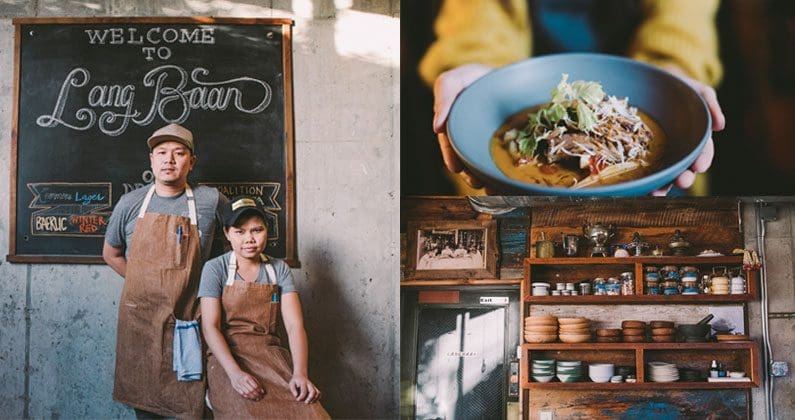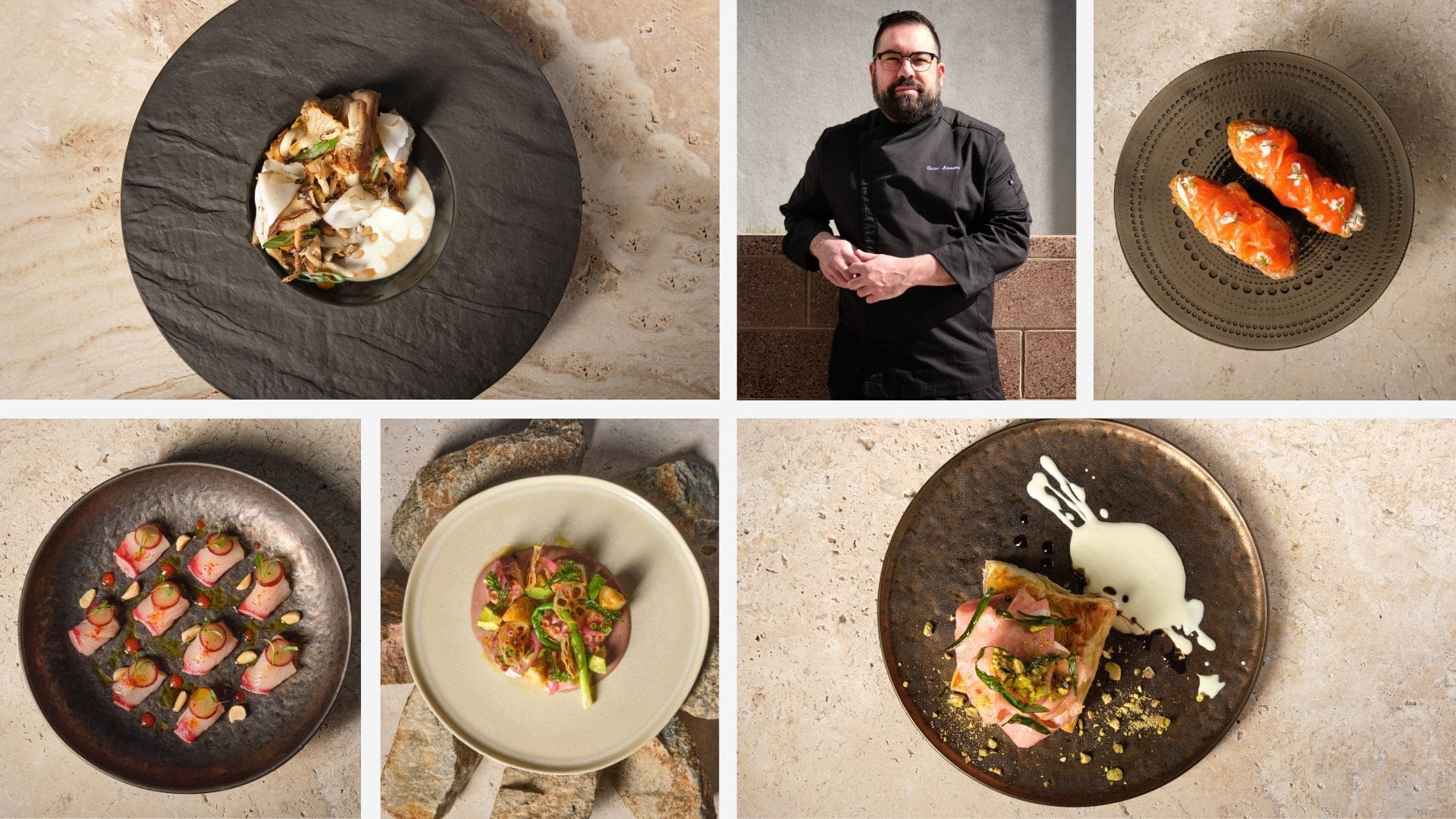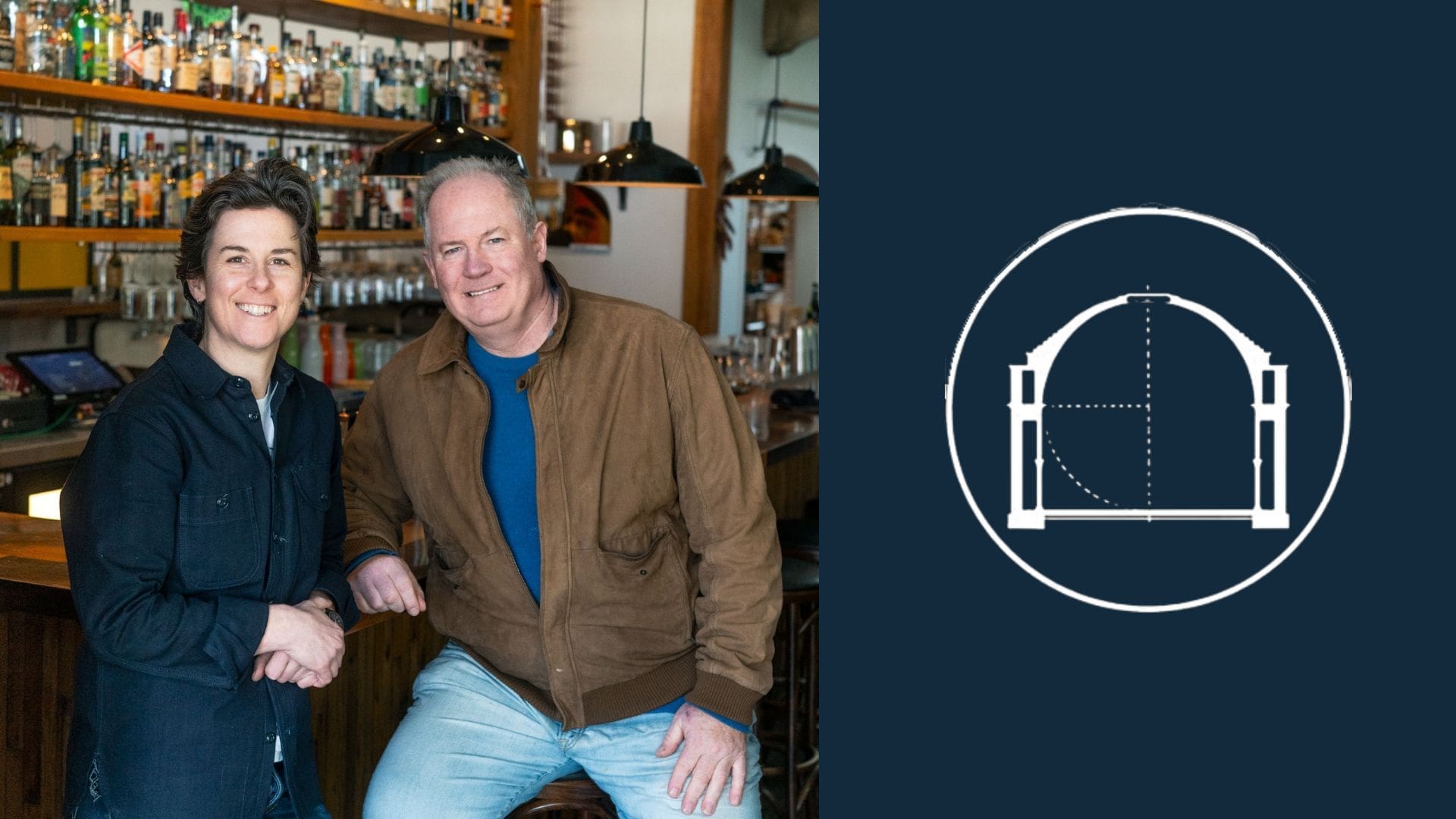Visiting Langbaan feels like the best kind of secret. The dining room is visible from the street but only accessible via a small, dark hallway in Earl Ninsom’s restaurant PaaDee. Once the hostess swings back a bookshelf, Langbaan’s intimate, warmly lit dining room reveals itself—along with the smiling faces of its three chefs, who prepare each of the meal’s courses on the counter in full view of each of the restaurant’s nightly customers. Even if you’re not a fan of Thai cuisine, Langbaan is by far one of the best places to enjoy a meal in Portland.
An experienced chef, Ninsom co-founded several of Portland’s popular family-style eateries, such as Thai Cottage, now run by two of his siblings; Tarad Thai Market, run by his brother; Mee-Sen and the casually cosmopolitan PaaDee. With Langbaan, Ninsom branched out into territory that has been largely unexplored, re-envisioning the familiar ingredients of green mango, curry, chiles and ginger into a clean, bright tasting menu that highlights delicately handled fruit and herbs, and tender fish and meats.
Helping Ninsom in this ambitious endeavor are chefs Rassamee Raysuntia and Duangduean Tattaruji. Raysuntia worked at Nahm, the top-rated restaurant in Asia, but she brings more than her skill set to Portland. With Ninsom, she creates a wildly creative vision. When we visited, the tasting menu—it changes monthly—was inspired by a cookbook that lists recipes prepared for the Thai royal family, dating back to 1882.
Ninsom and Raysuntia refine the recipes before presenting them at the table. The results upend all expectations. In the Pacific Northwest, Thai is something of a comfort food, the way divey Chinese or migas might be considered elsewhere. But here, the evening starts with a burst of flavors in the form of an appetizer called miang som-o, a small, intense bite of pomelo, shrimp, shallot, chili, lime and ginger in roasted coconut sauce, all wrapped in a betel leaf. It’s fresh and sweet, sour and spicy all at the same time, but leaves the palate clean for the dazzling array of courses to come.
The courses are often as visually playful as they are delicious. For example, a cuttlefish with salted duck egg, cabbage and chili-lime dressing arrives at the table in a dish that could fit in the palm of your hand, its legs splayed in a tiny star. After tasting the dtom gati hoy laii dok gra lum, or coconut milk soup with clam and cauliflower, and how it’s clean and reminiscent of the sea, you wonder how you will ever go back to eating sticky-sweet tom kha gai ever again.
And although each of the entrees seems simple, served with a scoop of coconut rice, the attention to detail is revelatory. A salt-encrusted tilapia begs to be picked through with the fingers to excavate each moist white morsel. The heat from the sauce of the lamb curry doesn’t coat the tongue or linger in the throat, and the richness of the lamb is spiked by the tang of the pineapple.
You can partake of the multiple desserts without guilt. Cooked kabocha squash is indulgent without being over the top, with the velvety softness of the soft squash complemented with several hearty spoonfuls of warm coconut cream and white sesame. Similarly, the drizzle of coconut caramel over the warm grilled banana can almost seem like an afterthought. The caramelization of the banana’s sugars make the humble, common fruit seem like a complete dessert in and of itself.
Langbaan has won a slew of local accolades, as well as praise from food luminaries like Ruth Reichl, and for good reason. Its presentation of Thai cuisine is as original as that other Portland representative of Thai food who has since become famous nationwide, Andy Ricker. While the discussions of which restaurant is the most authentic are inevitable, those arguments skirt the real question, to wit: Is Langbaan completely delicious? And should you visit as often as its limited hours will let you? The answer to both of those is undoubtedly, “Yes.”
Follow on Facebook: Langbaan Kitchen
Track on Twitter: @langbaan











